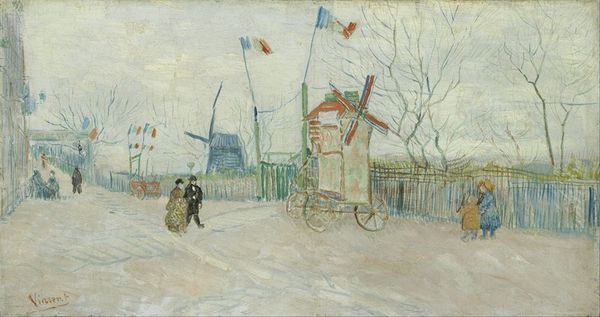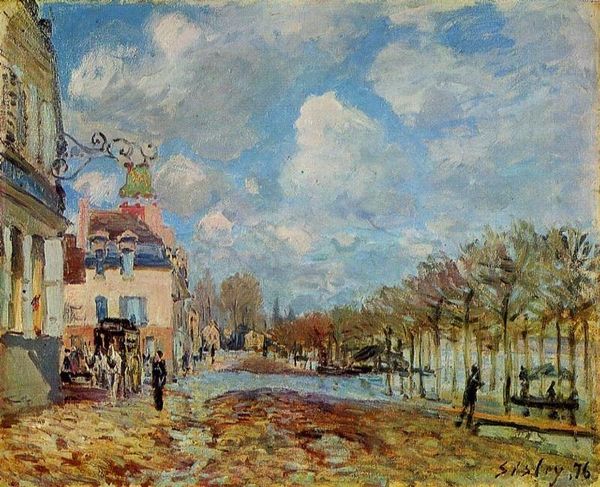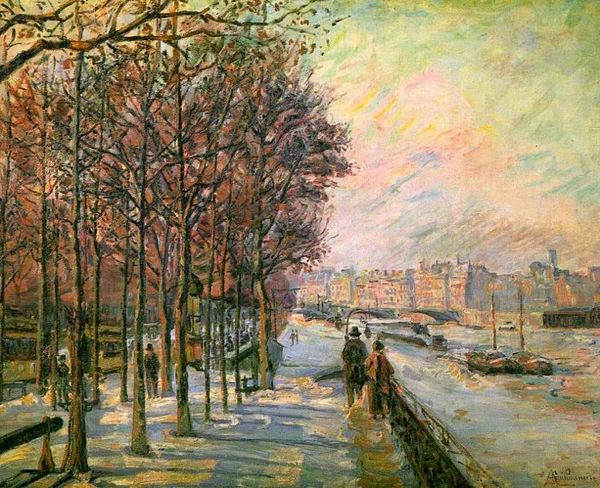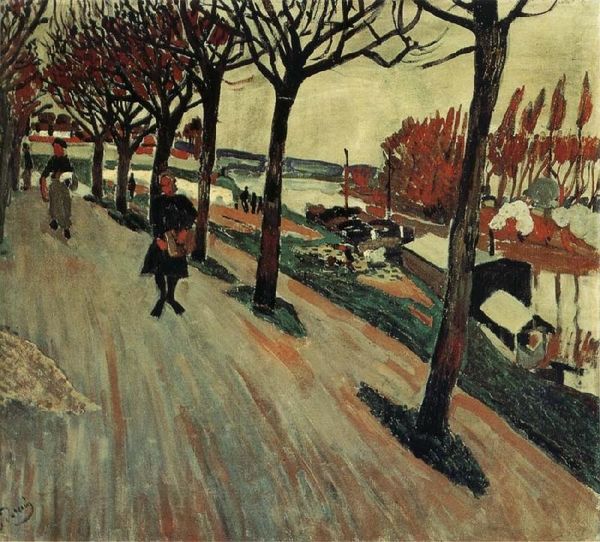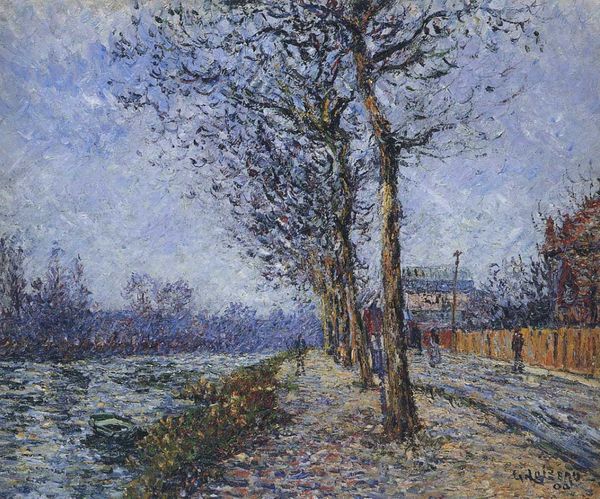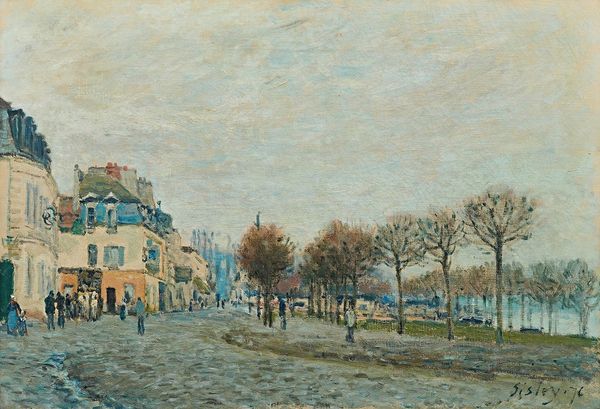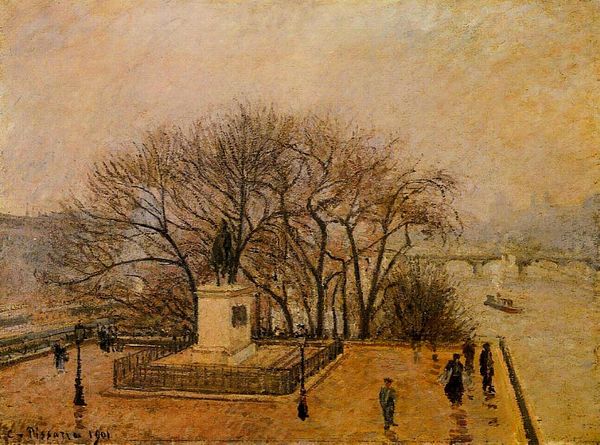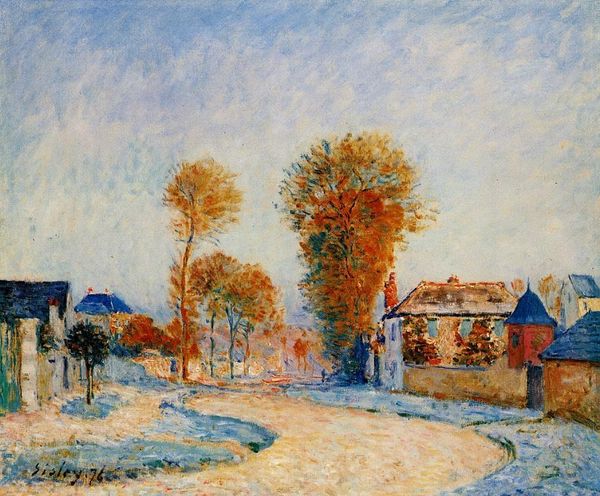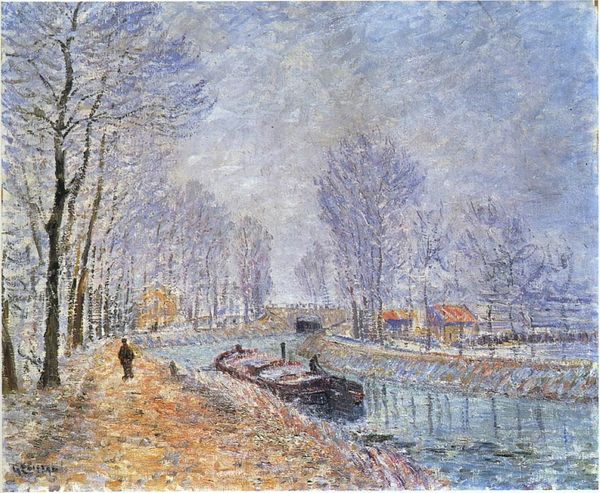
painting, oil-paint
#
painting
#
impressionism
#
oil-paint
#
landscape
#
impressionist landscape
#
cityscape
#
genre-painting
Copyright: Public domain
Curator: Standing before us is Van Gogh's "The Allotments at Montmartre," painted in 1887, now housed in the Van Gogh Museum in Amsterdam. Editor: It's… wistful, almost dreamlike. A touch sad, but in a gentle way, like a fading memory. I feel a surprising nostalgia for a place I’ve never been. Curator: Van Gogh captures Montmartre as a landscape undergoing a significant transition. The windmills and burgeoning buildings mark it as being on the cusp between rural countryside and urban development, full of new meaning. Editor: Those windmills, though. They look almost…stunted? Like they’re holding onto the past for dear life as the city encroaches. And that blue one especially; is it just me, or does it almost look melancholic? Curator: You see, windmills traditionally symbolize prosperity, abundance. Their presence amidst this somewhat chaotic scene can reflect not only the hope for progress but the transformation and change itself in how people understood such ideas in rapidly evolving, fin-de-siècle, urban societies. Editor: Mmm, I get that, and it resonates. But the way he’s used those brushstrokes, the almost frantic energy in them...it doesn’t scream “order” or "hope". More like yearning, perhaps a touch of anxiety as this old order begins to fall away? Curator: Perhaps it speaks to the ambiguity of progress, both desired and destabilizing. It might suggest the allure and apprehension that accompanies such seismic shifts in society. The flags, so patriotically French, further enhance that symbolism; unity of the past, perhaps. Editor: Ah, good point about the flags! They're vibrant, but still seem tethered to something fragile. What a visual statement to try and make with limited supplies, eh? It is striking that he can suggest so much just by his use of, essentially, colorful blocks. And they're almost child-like in a way, aren't they? The figures... very unrefined, basic. And yet they have weight, emotional depth. I find that incredibly moving. Curator: His method reveals so much. It's tempting to project narratives about our own cultural transformations on the imagery! Editor: Indeed. All the world's a palimpsest! Makes you wonder what people will read in *our* art a hundred years from now, right? And the conversation goes on...
Comments
No comments
Be the first to comment and join the conversation on the ultimate creative platform.
